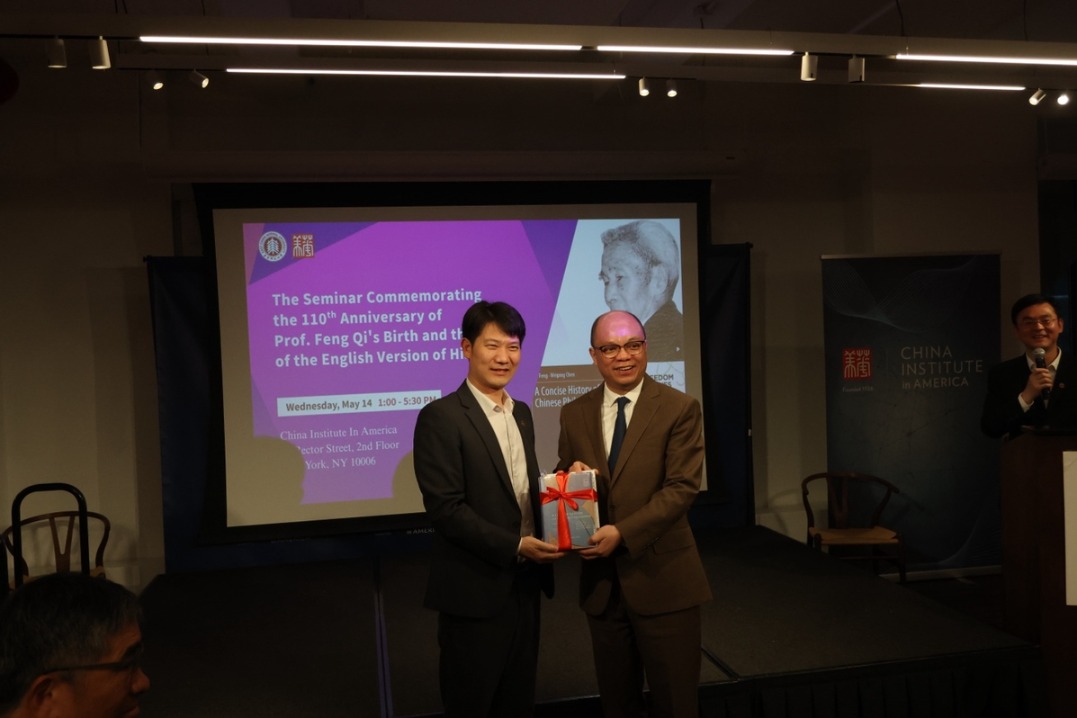Experts: China outpacing US on patent eligibility

China has been steadily expanding patent eligibility for other countries making innovations in software, fintech and biotech over the past few years, while the US has been making it more difficult to obtain such patents, said leading American patent law experts.
China is taking a "very practical approach" to handle patents with the rise of innovation, and, "I applaud the handling of this challenging part of the statute," said David Kappos, former undersecretary of commerce for intellectual property and director of the US Patent and Trademark Office.
Kappos also noted China's "pragmatism", and said that China, "to its great credit", issued a set of guidelines recently in which it articulated an approach to applying its eligibility criteria to artificial intelligence-related innovations and set forth 10 examples, said Kappos, a partner at Cravath, Swaine & Moore LLP, at a recent webinar held by Berkeley Center for Law and Technology.
However, some of those same examples that are patentable in China are unpatentable under US case law, he said.
The difference is because the two countries take different approaches to test eligibility. The guidelines set by the China National Intellectual Property Administration (CNIPA), the country's patent authority, urged examiners to review a proposed invention as a whole, to focus on the technical solution, which "leads you down a much more constructive path", said Kappos.
The US approach is to ask first whether an invention fits into one of the patentable categories that are usually interpreted as being concrete things that are capable of advancing the state of the progress of science and the useful arts, explained Robert Merges, professor of law and technology at University of California, Berkeley.
The "abstractness test" has made this a threshold issue and a matter of law, and as a result, a case can be disposed of right at the beginning, he said.
For software-enabled, fintech and diagnostic inventions, the problem with the abstractness test is that even the word abstract itself is difficult to define, said Merges.
One of the benefits of China's approach is that the technical-solution test tends to focus on the concrete features of the invention, whereas in the US, a lot of time is spent arguing whether the actual claim in the case is abstract or not, he said.
It's easier to get this kind of patent in China, because "you don't have to argue the metaphysics of whether your invention is abstract. You simply ask whether it provides a technical solution," said Merges.
While doing a comparative study between the US and China, Kappos and his associate found more than 12,000 cases that had been granted in China and Europe but denied in the US on statutory subject-matter grounds. "On an empirical basis, the US has a problem, and China does not have that problem and neither does Europe," said Kappos.
He used a few examples set forth by the CNIPA to explain the problem. "Among those examples were a couple that I thought could be characterized as rather abstract. A convolutional neural network, an artificial intelligence algorithm based on convolution, was found to be patentable subject matter in China. I think there is no way that would be patentable subject matter in the US," he said.
Another example is a communication method in a device between blockchain nodes. "This is another very high-tech approach to solving trust problems in computer networks that sounds kind of abstract and sounds like it might not be patentable in the US, and I think it probably would never pass patentability scrutiny in a US court, like a District Court or the federal circuit, but readily patentable subject matter in China," said Kappos.
The same concepts also apply to the 5G and internet of things areas, he said. An apparatus for improving the accuracy of machine-learning ensembles in the AI field, a method and apparatus for building a composite facial image using constituent parts, and a method and apparatus for creating energy-efficient network-charging stations are patentable in China, but they wouldn't be in the US, he said.
"You see that the US has handled items in these fields very differently from China," said Kappos. "We've got a situation that lacks certainty, lacks clarity, and that is anathema. It is toxic for investment."
Merges agreed. "We better change it, because this is a mess and does cause a lot of chaos. And anybody who builds international patent portfolios will tell you that the US is woefully out of step with the rest of the world," he said.
































